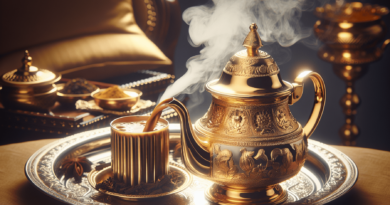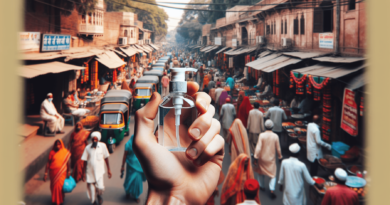What Are The Customs Around Greeting People In India?
Namaste as a Common Greeting
Meaning of Namaste
Namaste, derived from Sanskrit, translates to “I bow to you.” It is a common and respectful way to greet others in India.
How to Greet with Namaste
To greet someone with Namaste, you bring your palms together in front of your chest and lightly bow your head. This gesture symbolizes respect and humility towards the person you are greeting.
Importance and Significance
Namaste is not just a casual greeting; it holds deep cultural and spiritual significance in India. It is seen as a way to acknowledge the divine spark within each individual and to show reverence towards others.
In India, the way you greet someone says a lot about your manners and upbringing. By incorporating Namaste into your interactions, you can show your respect and appreciation for the people you meet.
Other Common Greetings
Have you ever wondered about the customs around greeting people in India? It is fascinating to learn about the different ways people greet each other in this diverse country. Here are some common ways people greet each other in India.
Greetings with a Smile
In India, it is common to greet someone with a smile. A warm smile is considered a universal gesture of friendliness and hospitality.
Saying ‘Hello’ or ‘Hi’
Just like in many other countries, saying “Hello” or “Hi” is a common and friendly way to greet someone in India. It is a simple and effective way to start a conversation.
Regional Greetings
Different regions in India have their unique ways of greeting people. For example, in South India, people often greet each other by saying “Namaste,” while in the North, “Namaskar” is commonly used. Embracing these regional greetings can show respect for the local customs and traditions.
Greeting Etiquette
Respecting Elders
In India, it is important to show respect to elders when greeting them. This can be done by using traditional greetings like “Namaste” with a slight bow or folding your hands in front of your chest. Avoid shaking hands with older individuals unless they initiate it.
Gender Considerations
When greeting someone of the opposite gender, it is best to wait and see what gesture they offer first. Some women prefer not to shake hands, so it is important to respect their cultural norms. A simple “Namaste” or a nod of the head can be a polite way to greet someone of the opposite gender.
Handshake or No Handshake
Handshakes are common in business settings, but it is always safest to follow the lead of the person you are meeting. If they extend their hand, it is appropriate to reciprocate. Otherwise, a smile and a polite greeting will suffice.
Touching Feet as a Traditional Greeting
When and Whom to Touch Feet
In India, touching someone’s feet is a common way of showing respect, especially to elders or those of higher social status. It is usually done when you meet them for the first time, before starting a significant conversation, or to seek blessings.
Procedure for Touching Feet
To perform this gesture, bend down slightly and touch the person’s feet with your right hand. Some people may also touch their own chest or forehead after touching the feet as a sign of respect.
Symbolism and Respect
Touching someone’s feet is seen as a way of acknowledging their wisdom, experience, and blessings. It symbolizes humility and gratitude towards the other person.
In India, greeting someone by touching their feet is a significant part of the culture and a way to show respect and humility towards others.

Exchanging Garlands and Gifts
In India, greetings often involve exchanging garlands and gifts as a sign of respect and good wishes. The garlanding ceremony, known as “varmala,” is a common practice at weddings and formal events. It symbolizes acceptance and honor towards the person being greeted. Offering gifts is also customary, showcasing appreciation and goodwill. When selecting gifts, consider the recipient’s preferences and the occasion. Popular choices include flowers, sweets, clothing, or home decor items. Avoid items made of leather or alcohol, as they may not be culturally appropriate. Remember, the gesture of giving is more important than the value of the gift. By partaking in these customs, you show thoughtfulness and consideration towards others, fostering positive relationships and cultural understanding.
Greeting in Formal Settings
In India, greetings are an important part of social interactions, especially in formal settings. When meeting someone in a formal setting, it is customary to address them using their title and last name as a sign of respect. Handshakes are a common form of greeting, however, hugs are not as common, especially between men and women who are not close friends or family.
Using Titles and Last Names
When addressing someone in a formal setting, it is polite to use their title followed by their last name. For example, you may address someone as “Mr. Sharma” or “Dr. Patel” as a sign of respect.
Handshakes and Hugs
Handshakes are a common form of greeting in India, with a firm handshake being seen as a sign of confidence and respect. However, hugs are not as common, especially in formal settings.
Avoiding Physical Contact
In Indian culture, it is important to be mindful of personal space and avoid physical contact unless you are close friends or family members. Be respectful of others’ boundaries when greeting them in formal settings.
Hugs and Light Touches
In India, it is common to greet close friends and family members with hugs and light touches on the arm or shoulder. This physical contact is seen as a sign of warmth and closeness, so don’t be surprised if someone you know well greets you in this way.
Close Friends and Family
When greeting close friends and family members in India, it is common to use informal language and show affection. You may see people touching each other’s feet as a sign of respect, especially when meeting older family members or respected individuals.
Casual Greetings
In more casual settings, a simple nod or smile is usually sufficient as a greeting. Handshakes are also common, especially in business settings or when meeting someone for the first time. Remember to greet elders first as a sign of respect.
Greeting in Religious Contexts
Folding Hands as a Gesture
In India, it is common to greet others by joining your hands together with fingers pointing upwards, often accompanied by a slight bow. This gesture is a sign of respect and is commonly used when greeting elders, teachers, or religious figures.
Joining Palms in Prayer
Another common greeting in India is to join your palms together in front of your chest as if in prayer. This gesture is often accompanied by a verbal greeting such as “Namaste” or “Pranam” and is used when greeting friends, family members, or equals.
Offering Prasad
In religious settings or when visiting temples, it is customary to offer prasad, which is a sacred food item, to others as a form of greeting. Accepting prasad is seen as a blessing and a sign of goodwill.
Gestures of Respect and Politeness
When greeting people in India, there are various customs that show respect and politeness. One common gesture is touching the forehead lightly as a sign of respect. This gesture is a way of showing humility and acknowledging the other person’s status. Another common gesture is placing your hand on your heart while greeting someone, which signifies sincerity and warmth. Additionally, bowing slightly is a gesture of respect that is often seen when greeting elders or people of authority. These gestures are important in Indian culture as they reflect the values of humility, respect, and politeness. By incorporating these customs into your greetings, you can show appreciation for Indian traditions and connect with others in a meaningful way.
Greeting in Business and Professional Settings
When it comes to greeting people in India, there are specific customs that you should be aware of, especially in business and professional settings.
Formal and Polite Greetings
In India, it is common to greet others with a polite “Namaste” which involves pressing your palms together and bowing slightly. This is a respectful and traditional way to greet someone, especially elders or those in higher positions.
Addressing Superiors and Colleagues
When addressing superiors or colleagues, it is important to use appropriate titles such as “Sir” or “Madam” followed by their last name. This shows respect and professionalism in the workplace.
Importance of Customary Greetings
Customary greetings play a significant role in Indian culture as they show respect, humility, and a sense of tradition. By understanding and following these customs, you can build strong and positive relationships in both personal and professional settings.




